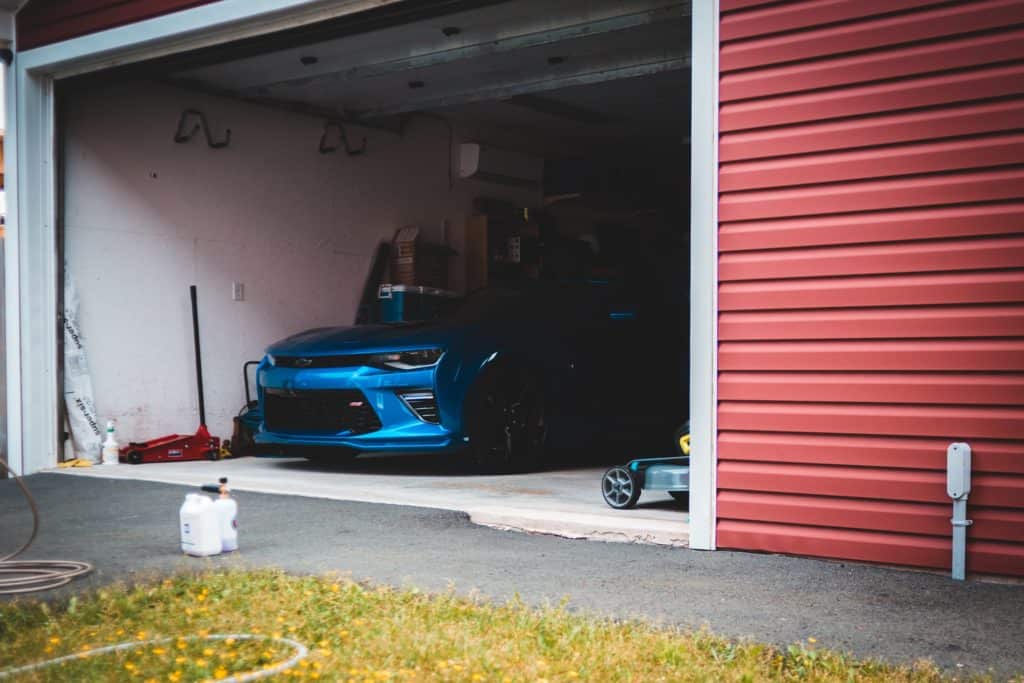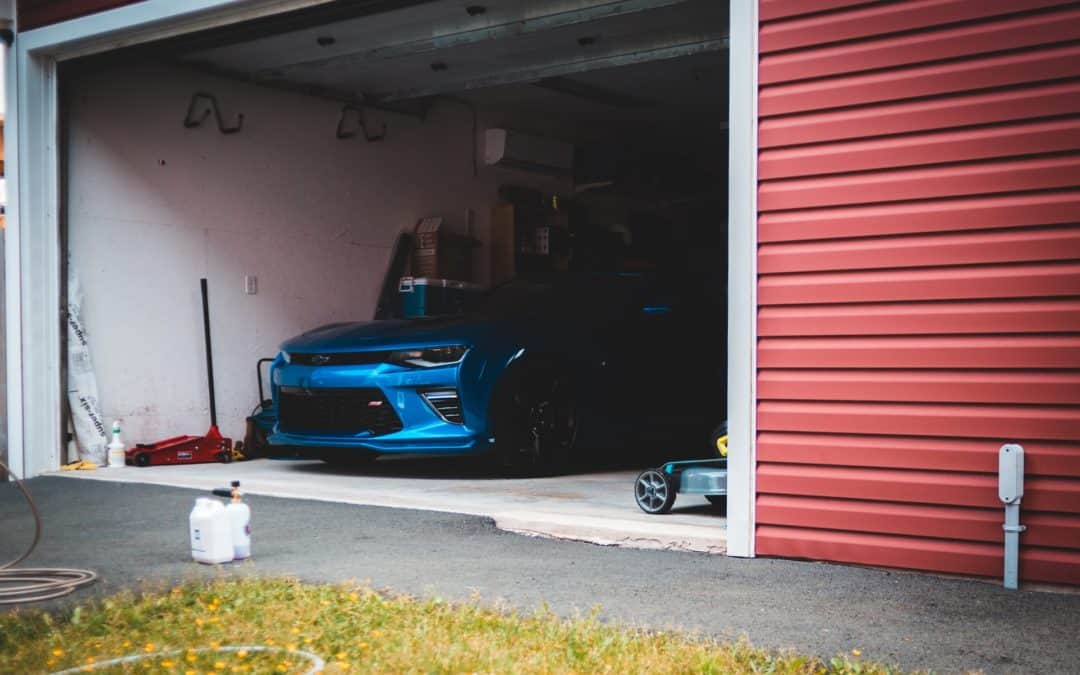Whether you’re getting home after a hectic day at work or an afternoon full of errands, you want your arrival to be as low-stress as possible. Listening to your garage door groan, grind, and screech shouldn’t be on your to-do list.
If you’ve become accustomed to the noise, you might assume that you can’t do anything to make your garage door quieter. With routine maintenance, however, you can make sure your garage door runs more smoothly, lasts longer, and makes less noise. Find out how to lubricate a garage door and get ready to enjoy the peace and quiet again.
Do Some Preliminary Maintenance

Image via Unsplash by introspectivedsgn using Unsplash License
Before you begin the process, it’s important to do some basic inspections. Start with this simple checklist:
- Do a visual inspection. First, give the whole system a once-over. Look for worn-down, damaged, or loose parts.
- Tighten any loose parts. Nuts and bolts hold the many parts of your garage door opener together, and they can loosen gradually with regular use. Grab a wrench and check all the bolts, taking care to tighten them without overdoing it.
- Inspect the hinges. With regular use, hinges can stiffen up and make your garage door even louder. Check to make sure that the hinges are in good condition and that they operate normally.
- Check the chain. The garage door opener chain may also loosen over time, which can add to the noise and even damage the door. Make sure the chain is tight, and increase the tension if necessary.
It’s also critical to inspect the rollers before you proceed further. After all, the rollers keep your garage door moving smoothly along the tracks, so it’s important to maintain them properly. Before you apply any lubricant, make sure you know what kind of rollers your garage door opener uses:
- Nylon: Arguably the best-performing material, nylon is naturally quiet and long-lasting.
- Plastic: Since it’s designed to be replaceable, plastic is most likely to need frequent maintenance or repairs.
- Steel: Although steel is highly durable and can last for decades, it needs regular maintenance to keep noise levels down.
Select the Right Lubricant
Next, make sure you have the right product for the job. It’s easy to assume that an everyday lubricant like WD-40 will work just fine on your garage door. However, you should never use WD-40 on your garage door because it does more than just reduce friction and let the parts work together more smoothly. It also has chemicals that reduce rust and grease, which could damage your garage door opener.
Instead, look for a silicone or white lithium grease product. Sprays and aerosols tend to work best for keeping the metal parts of your garage door opener from sticking, and they make it easy to get those hard-to-reach spaces.
Cut the Power
Once you’ve done some basic checks and stocked up on the right product, you’re ready to start working on your garage door. Begin by shutting off the power to the opener so it doesn’t start running in the middle of the job. Then, disengage the opener so you can open and close the door manually.
Maintain the Tracks
Next, grab a damp rag and wipe off the garage door’s tracks. Take care to clean along the inside and outside of the tracks, as both sides tend to accumulate dirt and debris. Don’t apply any lubricant to the tracks because it can make the garage door opener’s job harder. Instead, focus on getting the tracks as clean as possible.
Spray the Springs
Apply a thin coat of lubricant to the garage door’s springs. Avoid applying too much, as the excess lubricant will eventually drip onto the floor of the garage. Over time, it can create a mess and may even cause slips and falls.
Handle the Hinges
If your garage door has metal hinges that connect each panel, lubricate them, too. Take care to spray the pivot points, which are the areas where the hinges meet the track, while keeping the rest of the panel clean.
If your garage door’s hinges are made from plastic or another synthetic material, skip this step. Applying lubricant to plastic isn’t necessary and can have negative effects. Most lubricants cause plastic to break down more quickly, leading to more hassle and higher costs for you in the long run.
Check the Rollers
Next, it’s time to tackle the rollers. If your garage door has nylon or plastic rollers, they don’t need lubricant. Instead, take care to spray the bearings only. Attach the thin plastic tube to the spray can for added precision.
If your rollers are metal, spray a small amount of lubricant on the bearings and rollers. Use a rag to remove any excess to prevent it from dripping onto your vehicle or the garage floor.
Tackle the Rail
Turn your attention to the top of the rail. Apply just enough lubricant, but take care to avoid the chain itself. Garage door opener chains have a natural lubricant that shouldn’t mix with spray silicone lubricant or white lithium grease.
Finish With the Locks
If your garage door doesn’t have a lock, you can skip this step. If it does, spray some lubricant on the lock, armbar, and keyhole. Adding a thin coat to the lock area will make it easier for you to lock the door when necessary.
Do Some Final Checks
After finishing with the locks, do a few final checks to make sure you’ve addressed all of the potential issues. Manually open and close the door a few times while listening for noises. If necessary, add more lubricant to the problem areas, then repeat your check. Reengage the opener, turn the power back on, and enjoy a much quieter garage door.
To keep your garage door in the best shape, we recommend lubricating it about once a year. Whether you need standard maintenance or you’re in the market for a new garage door opener, we’re at your service. From new installations to routine maintenance to emergency repairs, we do it all.
Contact Overhead Garage Door for all your garage door installation and repair needs in Chicagoland.

